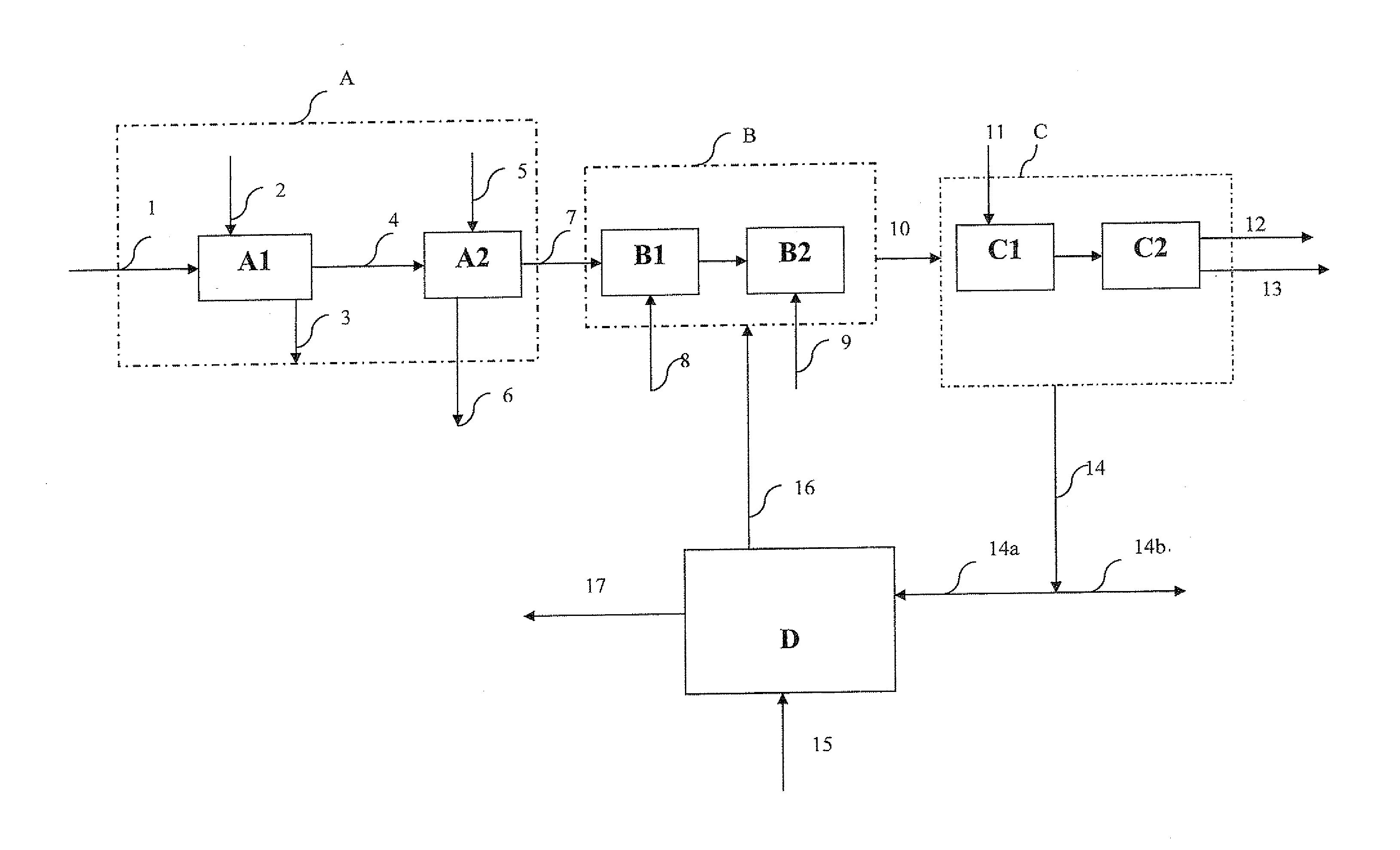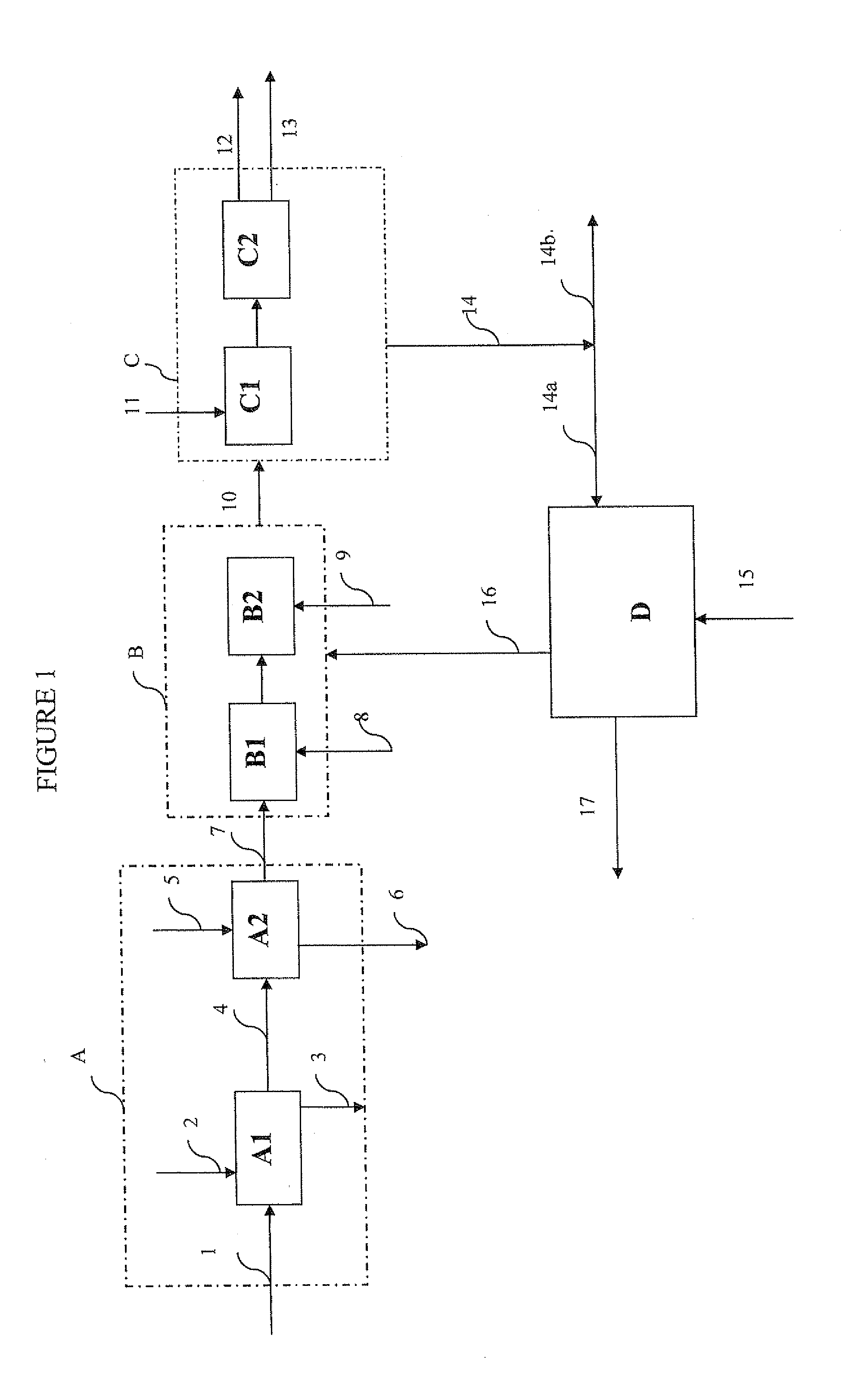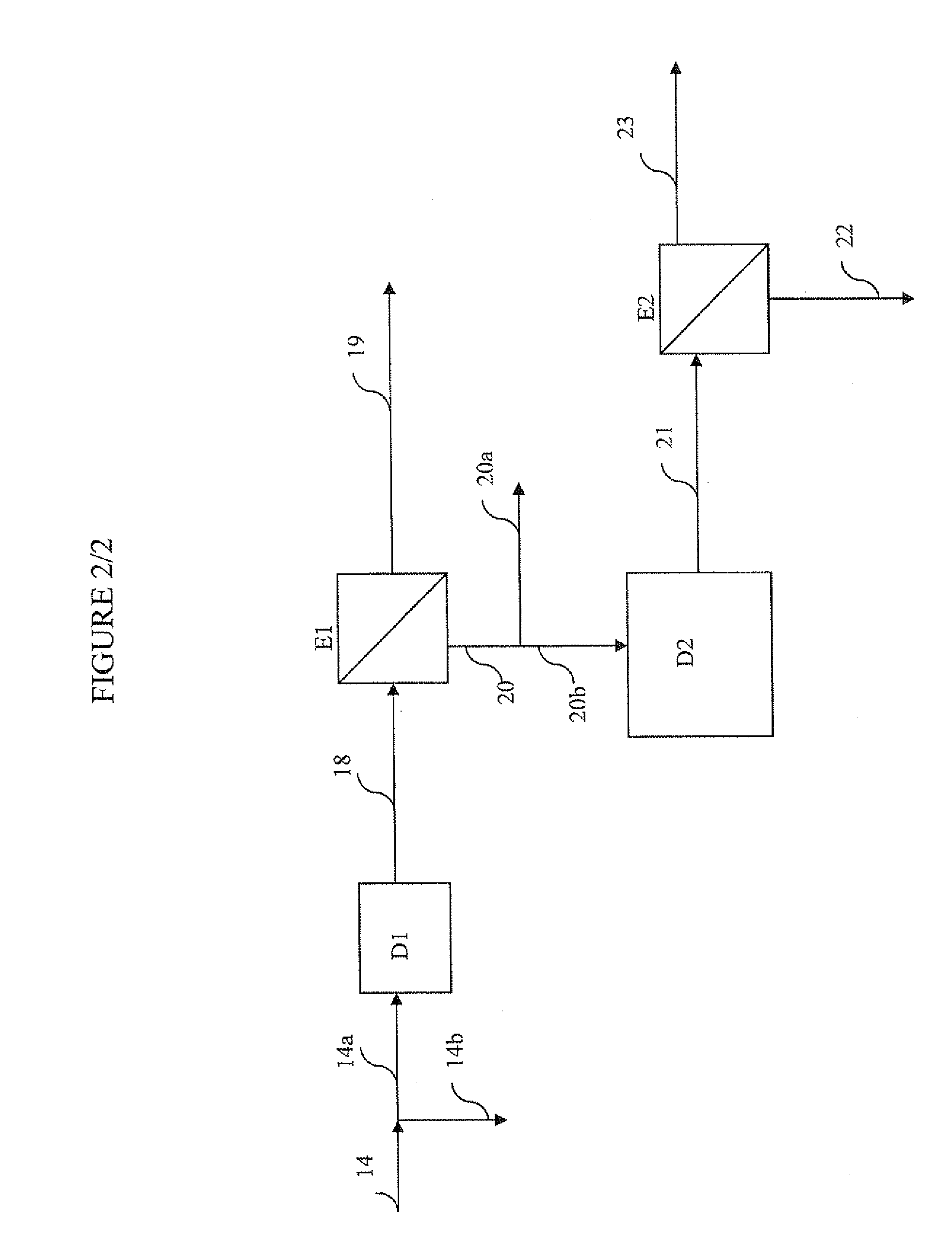Process for the production of alcohols and/or solvents from lignocellulosic biomass with acid recycle of solid residues
a technology of solid residues and lignocellulosic biomass, which is applied in the field of process, can solve the problems of reducing the susceptibility of the substrate to enzymatic hydrolysis, not being directly accessible to enzymes, and increasing the severity of pre-treatmen
- Summary
- Abstract
- Description
- Claims
- Application Information
AI Technical Summary
Problems solved by technology
Method used
Image
Examples
example 1
Not in Accordance with the Invention
[0105]A process for the production of ethanol from wood is considered, in which the wood is pre-treated in a Kraft type papermaking process, which is an alkaline process carried out in the presence of sodium hydroxide. The lignin-depleted pulp from the Kraft process is then washed and neutralized, then introduced into the process for the conversion of cellulosic substrate to ethanol by enzymatic hydrolysis and fermentation of glucose.
[0106]The process treated 100 tonnes / hour of wood with 20% moisture content. The composition of the dry matter was as follows:
Cellulose46.3%Hemicelluloses17.0%Acetate 0.7%Lignin29.0%Ash 3.5%Others 3.5%
[0107]The Kraft process was operated under conditions such that the paper pulp at the outlet contained:
98.0% initial cellulose 65.0%initial hemicelluloses100.0%initial acetate 5.0%initial lignin 80.0%initial ash 80.0%other initial compounds
[0108]The flow rate of the paper pulp at the outlet from the Kraft process was th...
example 2
In Accordance with the Invention
[0111]Here we describe the implementation of the invention in the process described in Example 1. Thus, 50 tonnes / hour of cake product was sent to an acid digestion reactor. Acid digestion was carried out at 150° C. for one hour in the presence of H2SO4. The quantity used here was 20 g H2SO4 / kg of solid material (2% by weight). Acid hydrolysis resulted in conversion of all of the hemicelluloses into C5 sugars, with a 3% degradation into furfural. 90% of the C5 and C6 sugars present in the cake at the start of acid hydrolysis were respectively converted into furfural and 5-hydromethyl furfural. The substrate from the acid hydrolysis was mixed with washed pulp before the neutralization step, thus supplying 8412 N; the complementary supply of acid to bring the mixture to the pH for hydrolysis was 468 N. The yields for the process for the conversion of substrate into ethanol were retained, and so the ethanol production was 15.95 tonnes / hour, i.e. an incre...
example 3
Not in Accordance with the Invention
[0112]A process for the production of an acetone-butanol-ethanol mixture from straw is considered.
[0113]The straw was conditioned then treated in a process known as an AFEX process, which consists of impregnating the straw with ammonia under pressure, followed by explosive depressurization. The substrate was then washed and neutralized before being introduced into a process for the production of acetone-butanol-ethanol by enzymatic hydrolysis, separation of the solid residue then fermentation of the sugars derived from the cellulose and hemicelluloses (C5 and C6).
[0114]The process treated 150 tonnes / hour of wood with 15% moisture content. The composition of the dry matter was as follows:
Cellulose40.0%Hemicelluloses27.0%Acetate 0.7%Lignin23.0%Ash 6.0%Others 3.3%
[0115]The AFEX process was operated under conditions such that the substrate at the outlet had the same composition and the same flow rate as the substrate at the inlet. All of the ammonia w...
PUM
| Property | Measurement | Unit |
|---|---|---|
| temperature | aaaaa | aaaaa |
| mass yield | aaaaa | aaaaa |
| temperature | aaaaa | aaaaa |
Abstract
Description
Claims
Application Information
 Login to View More
Login to View More - R&D
- Intellectual Property
- Life Sciences
- Materials
- Tech Scout
- Unparalleled Data Quality
- Higher Quality Content
- 60% Fewer Hallucinations
Browse by: Latest US Patents, China's latest patents, Technical Efficacy Thesaurus, Application Domain, Technology Topic, Popular Technical Reports.
© 2025 PatSnap. All rights reserved.Legal|Privacy policy|Modern Slavery Act Transparency Statement|Sitemap|About US| Contact US: help@patsnap.com



